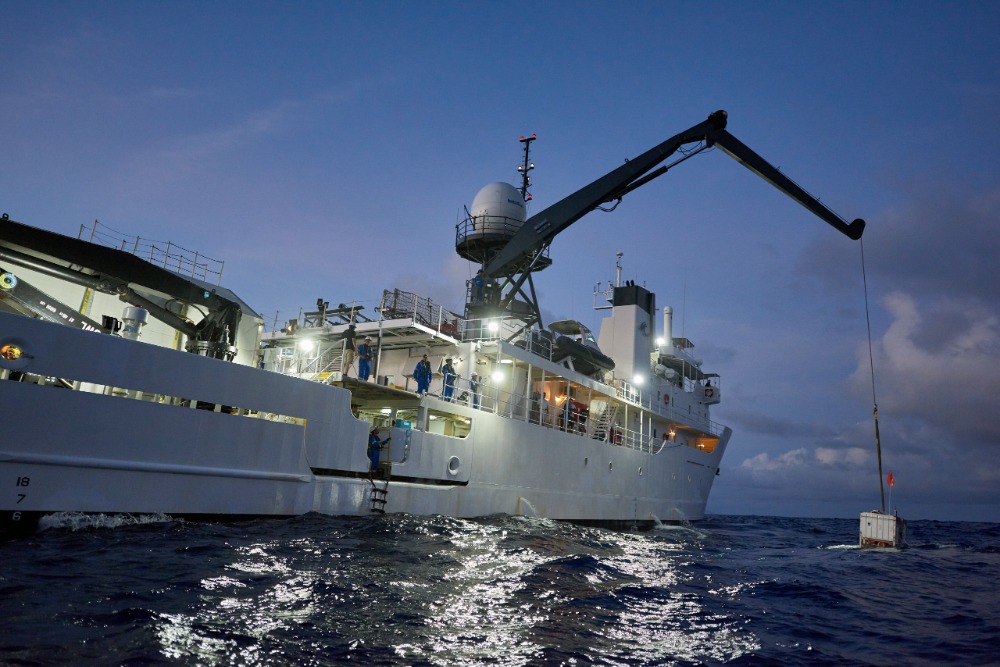Yachts For Science
Rob McCallum, Founder of EYOS Expeditions describes the compelling potential to connect groundbreaking research and superyachts…
Despite significant advancements in marine research technology and funding for scientific research since the second world war, we still know remarkably little about many parts of the ocean. According to the National Ocean Service, we have accurately explored and mapped just 5 per cent of the sea floor. The resolution on ocean charts is measured in the hundreds of meters, leading to the assertion that we know more about the near side of the moon than the deep-sea floor. Likewise, our understanding of the holistic marine ecosystem has been largely confined to coastal regions and those connected to commercial fishing interests.
The fundamental reason for this lack of knowledge is the cost and logistical hurdles faced by scientists undertaking the required research. Marine research vessels are rare and expensive. Applications for funding are complex and time allocations onboard are strictly limited. Operational capacity is far less than is needed for the levels of research needed to complete our understanding of the oceans. Enter private vessels and the remarkable Yachts For Science project, with EYOS Expeditions’ Rob McCallum as a founding member.
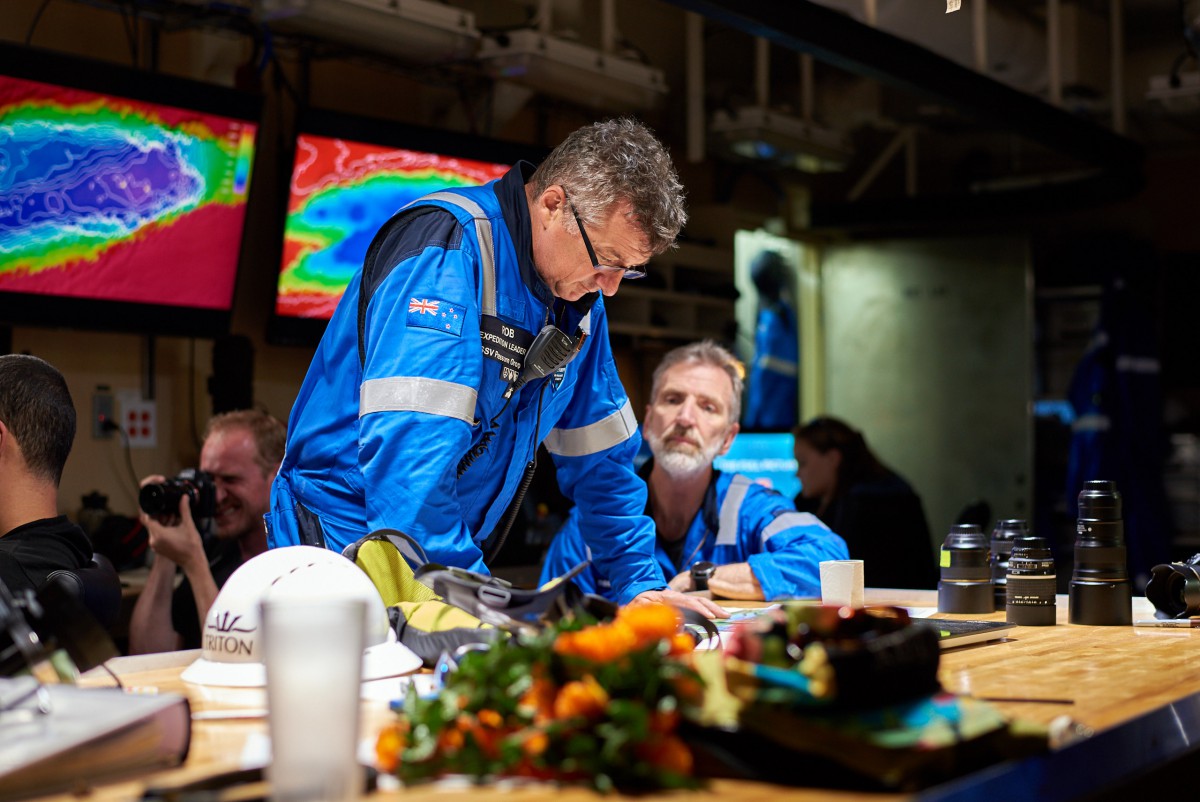 EYOS Expeditions’ Rob McCallum (image credit Reeve Jolliffe)
EYOS Expeditions’ Rob McCallum (image credit Reeve Jolliffe)
With the right level of organisation and planning, the global fleet of privately owned yachts has the collective capacity to make an immense contribution to ocean science. Connecting capable superyachts with scientists to conduct this research is the mission objective of the team at Yachts for Science. Some of the current projects they are coordinating include researching the underwater hydrothermal vents off the coast of The Azores, exploring the coral reefs of the twilight zone in the Northern Caribbean, and studying the White Shark population in the Mediterranean to name but a few. I spoke with McCallum, on the evening before one of his next expeditions in the Pacific, to explore the capacity for positive change in the superyacht sector.
Successfully marrying the philanthropic ambitions of superyacht owners and crews with the right scientific project is challenging, but with 20 years of exploration and research onboard a diverse array of private vessels, McCallum, and the team at Yachts For Science see huge potential in today’s fleet. “The good news is that once you understand the challenges, you can start pitching science to different parts of the industry. The superyacht sector has such an incredible opportunity and capacity to contribute. Yachting is a wealthy industry, and we all rely on the ocean. As the industry environmental conscience matures, there is a chance for us to understand the ocean and to give back to something we all love.”
Specialists in scientific exploration can provide incredible experiences and research results. One needs to think no further than the Five Deeps (& subsequent dive) expeditions and the work of EYOS and Caladan Oceanic for a great example of what can be achieved with planning, resources and a willingness to interact with the rigours of the science involved. Not all yachts are built like the DSV Pressure Drop, however, and not all yachts have the backing of a project like OceanX, but that does not exclude them from ground-breaking research.
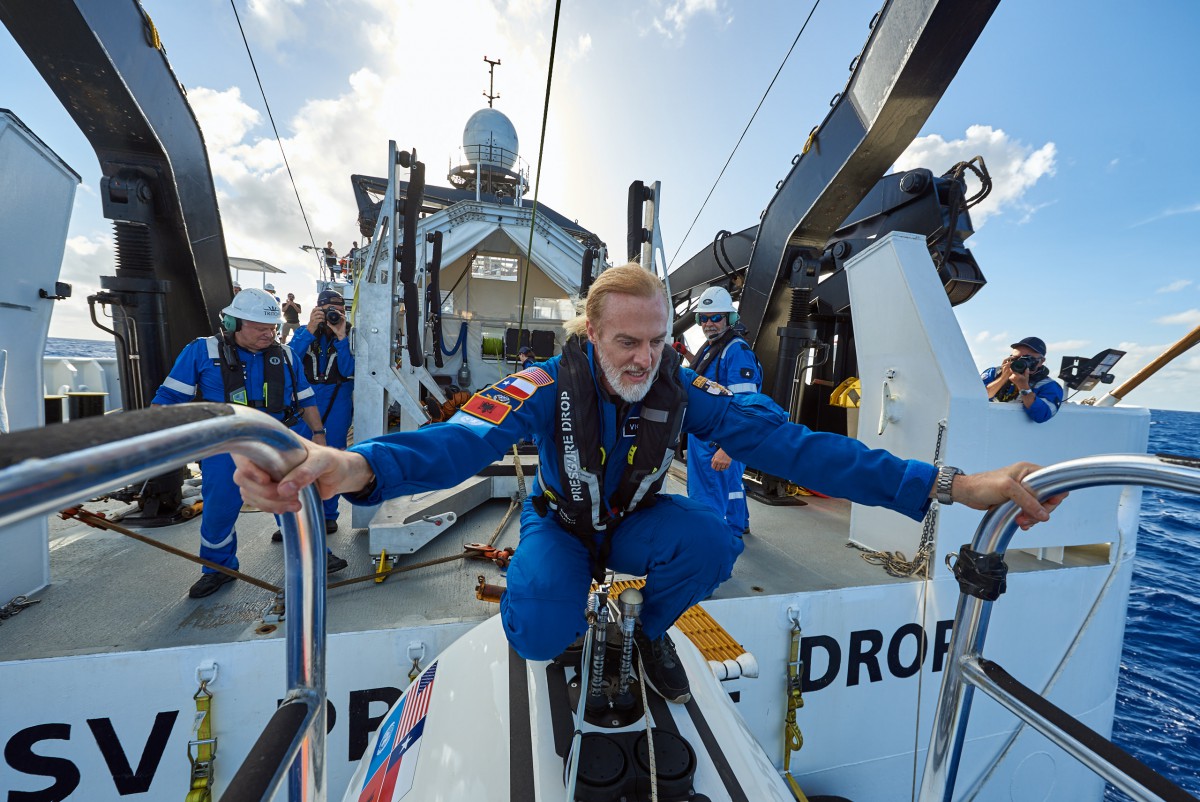 Victor Vescovo, boarding the deep-ocean submersible Limiting Factor, onboard DSV Pressure Drop (image credit Reeve Jolliffe)
Victor Vescovo, boarding the deep-ocean submersible Limiting Factor, onboard DSV Pressure Drop (image credit Reeve Jolliffe)
McCallum calls it the ‘scientific spectrum across the superyacht industry,’ and it covers essentially the entire sector. The vast majority of the more than 5000 30m+ superyachts in the fleet are capable of completing one of the projects that Yachts For Science have identified. “At one end (of the spectrum) we have those individuals with the passion and the resources to build and operate privately owned research vessels,” explains McCallum. “This includes initiatives such as REVOcean, OceanX, Caladan Oceanic, Schmidt Ocean Institute and others.”
Projects such as this have the serious financial backing that enables them to dedicate themselves full time to oceanic scientific research. The number of dedicated philanthropic vessels is growing, but they still represent a relatively small number of vessels. The next tier, McCallum explains, while not specialised, incorporates a huge number of highly capable yachts.
“There is an increasing number of yachts that are eager to engage with scientific research but can't necessarily commit to full-time research. This is where Yachts For Science comes in. We can say to these owners, managers and captains that, with the right level of organisation and planning, we can use the yacht as a platform for research. Often this work takes place while the owner is not on board, so the research does not disrupt a private trip or the charter season. Part of this planning is to also ensure that the significant contribution of these yachts is fully credited to them.”
The third tier is that of the citizen scientist. There are long-running scientific projects that can be contributed to by crew on crossings or mid-season, such as dragging a fine net for plankton surveys or microplastic impact assessments. Science, by and large, takes time. In order for it to be done accurately, much of the research is not glamorous, and an equal number of control studies must be undertaken. No less important, and equally rewarding for scientists, effective organisation and completion of the full range of research projects are the keys to progress in the marine science field.
“We can usually find a project for most vessels. They need a few fundamental features, like good access to the transom, and a winch or crane of some kind. As they are exposed to more facets of the diverse research programs, and the pure excitement and joy of making a discovery, many yachts are keen to tackle larger projects, but they reach their limit in terms of capability,” McCallum explains. “What is really exciting is that now we are seeing increasing numbers of owners specifying that these research capabilities are factored into their new-build process.”
I ask McCallum to specify these features - “Lifting capacity, ultra-low (-80C) freezers, web labs, dark rooms for deep-sea samples and media centres. It's very cool to be a part of, and we are just in our infancy as an organization. The potential for growth is huge." These are the features one may have associated with only a handful of yachts, such as Alucia, half a generation ago. It is exciting to hear McCallum’s enthusiasm for these projects, some of which, he assures me, will be paradigm-shifting for the industry. “Our clients will directly contribute over $100million supporting ocean science initiatives this year; a tangible demonstration of both their concern and their commitment”.
As the relationship between academic institutions and the superyacht industry progresses, the number of projects that vessels can interact with will diversify. Periods of downtime and crossings can become avenues for research, and the industry can assume a prominent role in furthering our understanding of the oceans.
“Yachts for Science is not a business thing for any of the founding members,” concludes McCallum. “It is an initiative for the good of the industry. We have an opportunity to showcase a good news initiative for the superyacht fleet, one that supports our collective obligation to ensure we contribute back to the core of our industry (the Ocean) in a positive way.”
We had the privilege of both Rob McCallum and Victor Vescovo joining us (via video link before a deep ocean dive during his latest expedition in the Pacific) at last week's inaugural Superyacht Forum Live - Pacific Tour - more to follow from this inspiring event in British Columbia.
To become involved and to learn more about the projects Yachts For Science is undertaking, please see the link here.
Main image credit: Reeve Jolliffe
NEW: Sign up for SuperyachtNewsweek!
Get the latest weekly news, in-depth reports, intelligence, and strategic insights, delivered directly from The Superyacht Group's editors and market analysts.
Stay at the forefront of the superyacht industry with SuperyachtNewsweek
Click here to become part of The Superyacht Group community, and join us in our mission to make this industry accessible to all, and prosperous for the long-term. We are offering access to the superyacht industry’s most comprehensive and longstanding archive of business-critical information, as well as a comprehensive, real-time superyacht fleet database, for just £10 per month, because we are One Industry with One Mission. Sign up here.
Related news
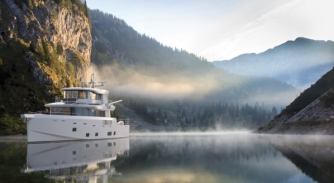
Arksen - Exploring the Pacific
The Superyacht Forum - Pacific Tour local partner, Arksen, is building yachts designed for highly capable, sustainable and efficient world cruising
Fleet

Where two seas meet
Craig Armstrong, co-owner of Rua Moana, shares the story of building and chartering a uniquely New Zealand superyacht
Owner
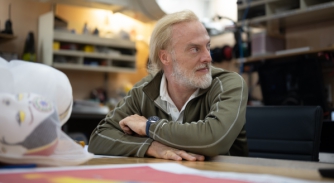
Victor Vescovo - exclusive interview
Where to next for the most capable private deep-sea exploration vessel on earth, and its intrepid owner
Owner
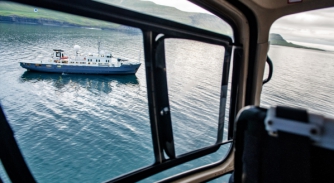
EYOS announces Arctic and Antarctic expeditions in 2022
Ben Lyons, EYOS Expeditions CEO discusses the draw of Greenland and the capabilities of MV Nansen Explorer
Owner
Related news
Arksen - Exploring the Pacific
3 years ago
Where two seas meet
3 years ago
Victor Vescovo - exclusive interview
3 years ago
NEW: Sign up for
SuperyachtNewsweek!
Get the latest weekly news, in-depth reports, intelligence, and strategic insights, delivered directly from The Superyacht Group's editors and market analysts.
Stay at the forefront of the superyacht industry with SuperyachtNewsweek


